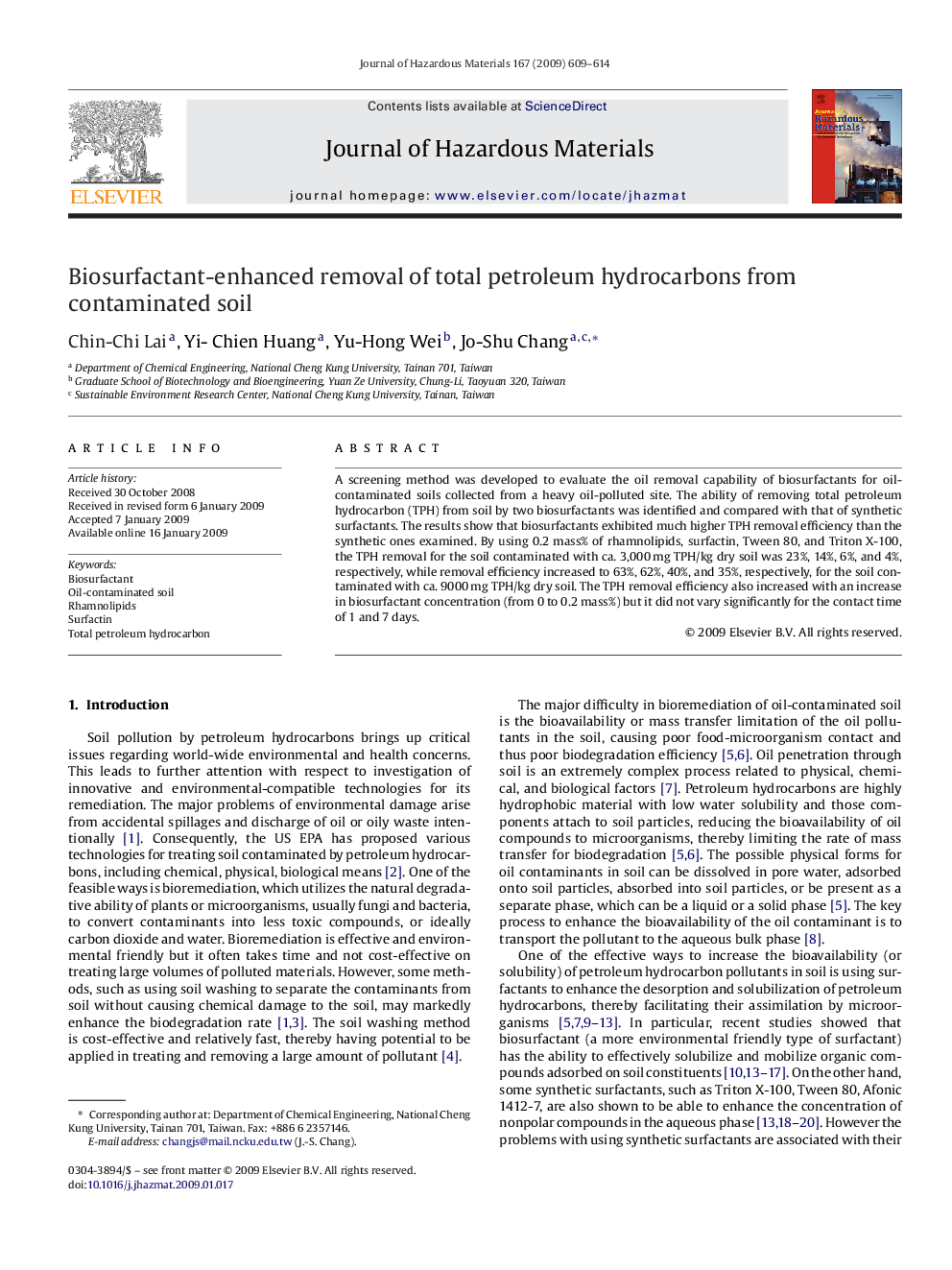| Article ID | Journal | Published Year | Pages | File Type |
|---|---|---|---|---|
| 581826 | Journal of Hazardous Materials | 2009 | 6 Pages |
Abstract
A screening method was developed to evaluate the oil removal capability of biosurfactants for oil-contaminated soils collected from a heavy oil-polluted site. The ability of removing total petroleum hydrocarbon (TPH) from soil by two biosurfactants was identified and compared with that of synthetic surfactants. The results show that biosurfactants exhibited much higher TPH removal efficiency than the synthetic ones examined. By using 0.2 mass% of rhamnolipids, surfactin, Tween 80, and Triton X-100, the TPH removal for the soil contaminated with ca. 3,000Â mg TPH/kg dry soil was 23%, 14%, 6%, and 4%, respectively, while removal efficiency increased to 63%, 62%, 40%, and 35%, respectively, for the soil contaminated with ca. 9000Â mg TPH/kg dry soil. The TPH removal efficiency also increased with an increase in biosurfactant concentration (from 0 to 0.2 mass%) but it did not vary significantly for the contact time of 1 and 7 days.
Related Topics
Physical Sciences and Engineering
Chemical Engineering
Chemical Health and Safety
Authors
Chin-Chi Lai, Yi- Chien Huang, Yu-Hong Wei, Jo-Shu Chang,
